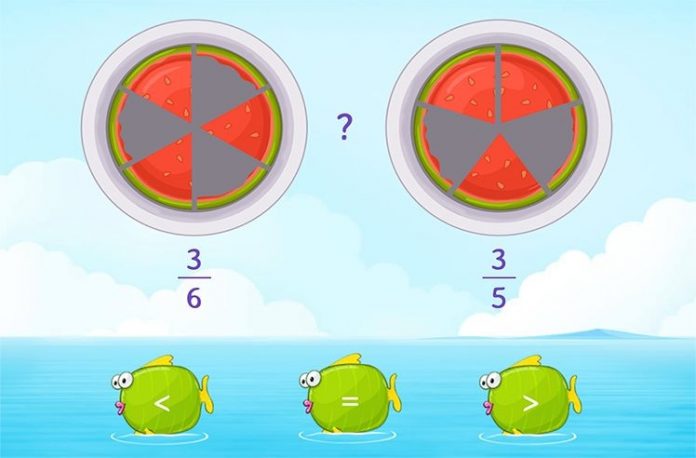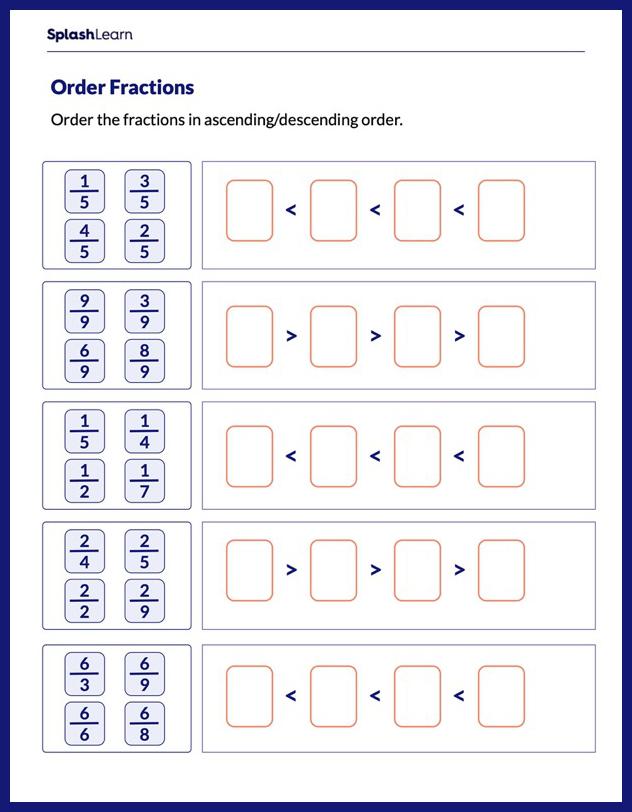Fractions are a simple mathematical concept yet a significant hurdle for many students. Understanding how to teach fractions effectively is crucial. Research reveals that despite their long history in various civilizations and their daily applications, fractions remain one of the most challenging topics in primary education.
SplashLearn: Most Comprehensive Learning Program for PreK-5

SplashLearn inspires lifelong curiosity with its game-based PreK-5 learning program loved by over 40 million children. With over 4,000 fun games and activities, it’s the perfect balance of learning and play for your little one.
Try for freeThe difficulty lies not just in academic contexts; it extends to everyday situations like estimating discounts, following recipes, or reading maps. The study emphasizes that mastering fractions involves more than just numbers; it requires a deeper understanding of proportions, comparisons, and relationships.
Children often struggle with fractions because they require a conceptual leap from the familiar territory of whole numbers to the more abstract rational numbers. This leap involves understanding that fractions represent a different category of numbers, each with its own rules and properties.
Related Reading: What are Fraction Rules - Definition, Types, Examples, Facts
In this blog, we aim to address these challenges head-on. We will explore some engaging and effective activities designed to make learning fractions easier and enjoyable for kids.
1. Online Fraction Games
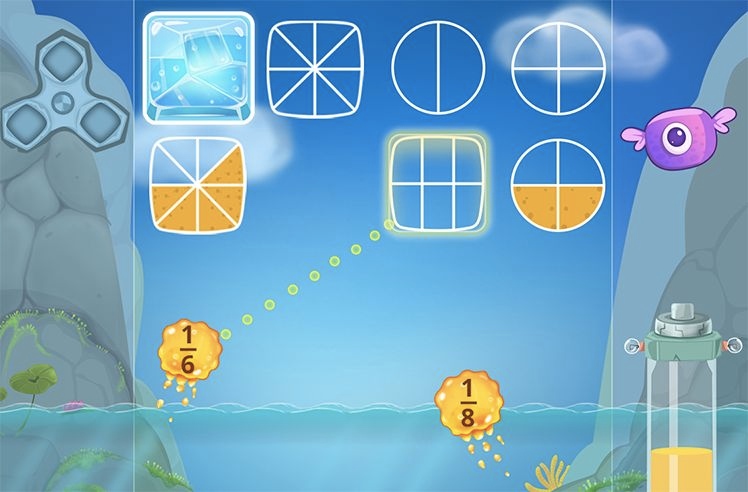
Explaining fractions to kids is often difficult because it is so hard for them to visualize what 1/2 is or looks like. This is where digital fraction games can be incredibly useful. These games use colorful, interactive visuals to represent fractions in a way that kids can understand and relate to.
In online fraction games, fractions are often represented by images, such as a pie or a bar, divided into equal parts. For example, a game teaching 1/2 might show a pie cut into two equal pieces. The child can then interact with the game by clicking on one piece of the pie to see how one part relates to the whole. These games also usually include various difficulty levels, starting with simple concepts and gradually introducing more complex ones. As children play, they receive immediate feedback on their choices, which helps reinforce their learning and correct misunderstandings in real-time.
Here are some fun online fraction games that can ease the concept for your child:
2. Fraction Bingo
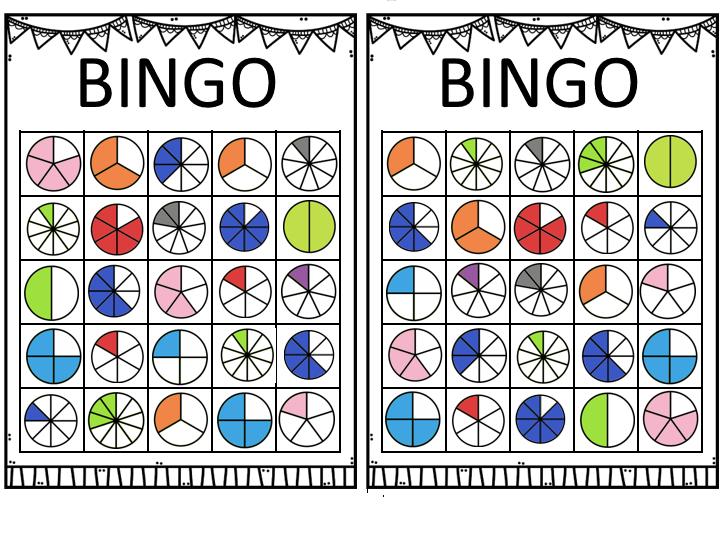
Fraction Bingo is an engaging game that aids in teaching fractions, where children identify and match fractions in a bingo-style game.
Materials Needed: Bingo cards with fraction representations, markers or small counters.
How to Do:
- Prepare bingo cards with different fraction representations (like ½, ¼, ⅓).
- Call out fractions or show visual representations.
- Players find and mark the called fraction on their bingo card.
- The first to complete a line shouts “Bingo!”
Learning Outcome: This activity helps in recognizing different fraction forms, enhancing children’s ability to identify fractions visually.
3. Build-a-Fraction Workshop
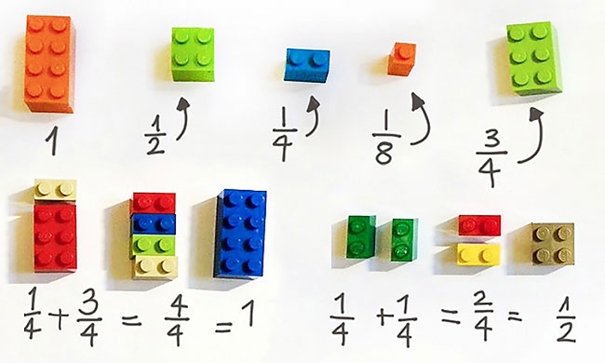
The Build-a-Fraction Workshop is a hands-on method and one of the best ways to teach fractions, using building blocks to construct and deconstruct fraction concepts.
Materials Needed: Sets of building blocks or Lego bricks.
How to Do:
- Use blocks of different colors to represent fractions.
- Challenge children to build structures using specific fractions (like using ⅓ red blocks and ⅔ blue blocks).
- Discuss how different combinations of blocks can represent different fractions.
Learning Outcome: This activity promotes visualizing fractions in a tangible way, helping children understand the composition of fractions through physical manipulation.
4. Fraction Wheel
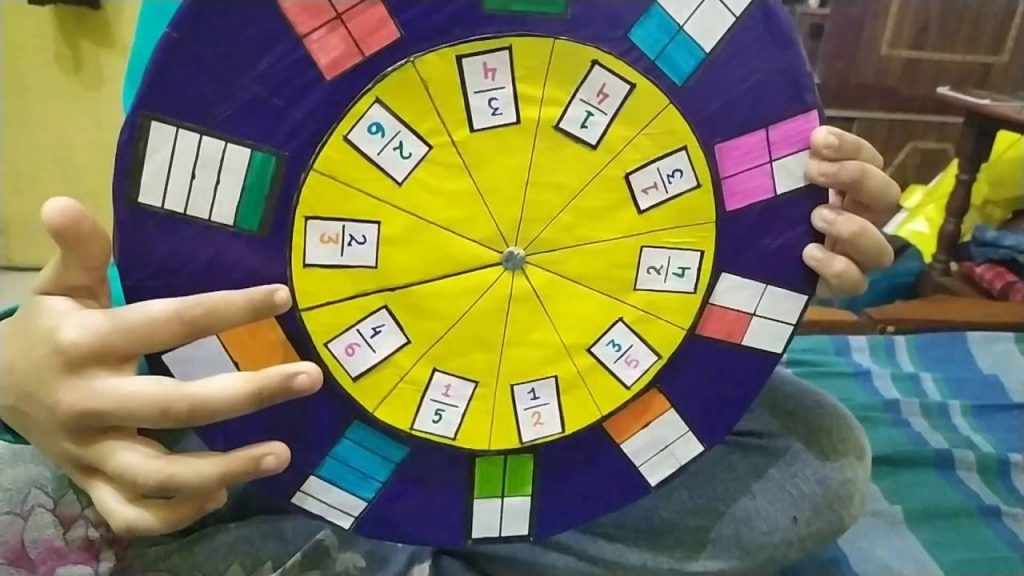
This activity involves creating a wheel visually demonstrating the relationships between different fractions.
Materials Needed: Cardboard or sturdy paper, Markers or colored pencils, A split pin (brad fastener), A protractor or compass (for accurate divisions)
How to Do:
- Cut out a large circle from the cardboard.
- Use the protractor or compass to divide the circle into equal parts, such as halves, thirds, quarters, etc.
- Label each section with the corresponding fraction.
- Create a smaller circle with an arrow and attach it to the center of the larger circle using the split pin, allowing it to spin.
- Children can spin the arrow to explore how different fractions make up a whole and compare the sizes of different fractions.
Learning Outcome: This activity helps children visualize and understand the concept of fractions as parts of a whole and the relationships between different fractions. It’s an interactive tool that makes abstract fraction concepts more concrete and understandable.
5. Fraction Pizza Party
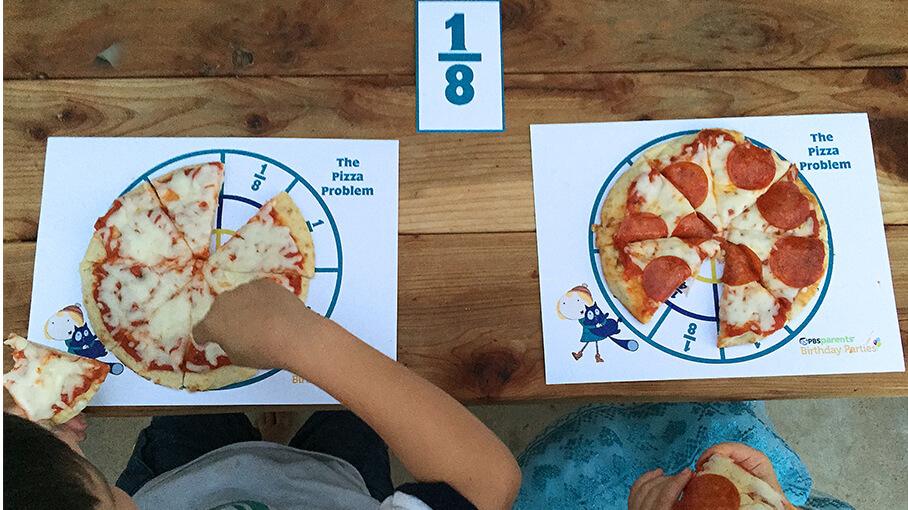
One of the best ways to teach fractions is through relatable and tangible examples. The Fraction Pizza Party uses pizza cut-outs to demonstrate fraction concepts, making learning both fun and appetizing.
Materials Needed: Paper or cardboard, colored markers, scissors.
How to Do:
- Create pizza cut-outs from paper or cardboard.
- Divide each pizza into different numbers of slices (halves, thirds, quarters, etc.).
- Ask children to assemble a whole pizza from the slices and then create specific fractions (like ½ or ¾) using different pizza pieces.
Learning Outcome: Children will understand the concept of parts of a whole, as they see how individual slices come together to form a complete pizza.
6. Cooking with Fractions
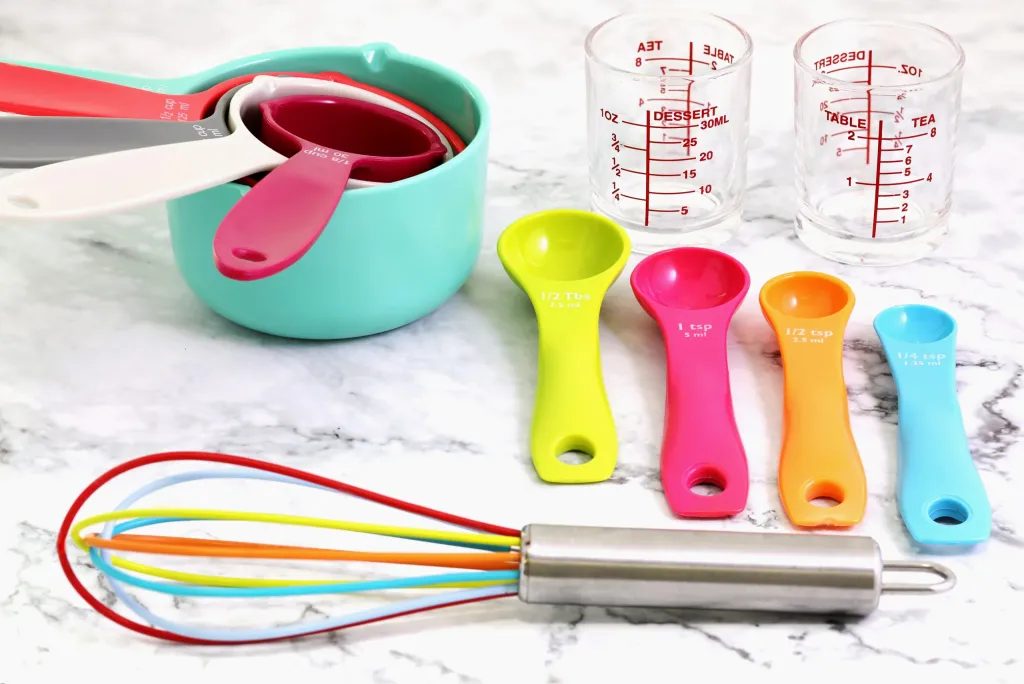
Cooking with Fractions is an easy way to learn fractions, where recipes teach measurements and fractions in a practical setting.
Materials Needed: Simple recipes, measuring cups, and spoons.
How to Do:
- Choose a recipe that involves simple fraction measurements (like ½ cup of sugar, ¾ tablespoon of salt).
- Have children measure out ingredients according to the recipe.
- Discuss how different measurements combine to create the final dish.
Learning Outcome: This activity demonstrates the practical application of fractions, showing how fractions are used in everyday cooking.
Related Reading: Best Hands-On Measurement Activities for Kids
7. Fraction Art
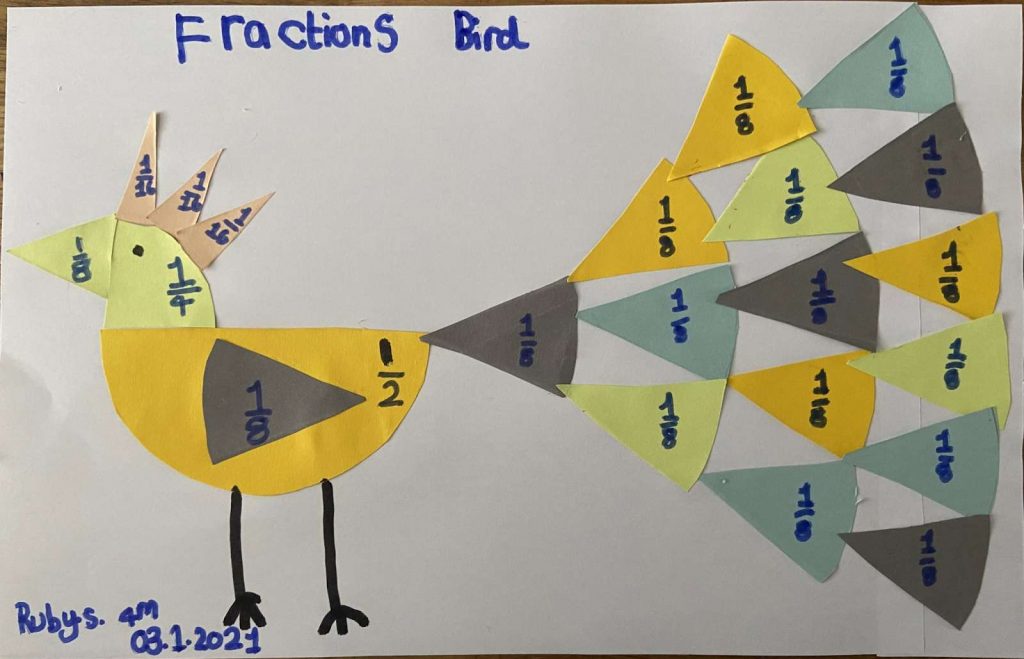
Fraction Art involves drawing or crafting projects that incorporate fraction concepts, fostering creativity in understanding fractions.
Materials Needed: Paper, coloring materials, rulers.
How to Do:
- Assign projects where children create designs or patterns using fractions (like dividing a paper into ¼ or ⅓ and coloring each part differently).
- Encourage them to explain the fraction each part of their artwork represents.
Learning Outcome: This activity enhances creativity in understanding fractions, as children visually represent and interpret fractions through art.
Related Reading: Best Color Activities for Preschoolers to Boost Creativity
8. Outdoor Fraction Scavenger Hunt
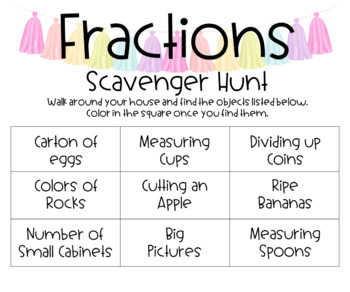
The Outdoor Fraction Scavenger Hunt is a dynamic way on how to teach fractions, where children find objects in nature that represent different fractions.
Materials Needed: List of fractions to find, bags or containers for collection.
How to Do:
- Create a list of fractions (like ½, ⅓) for children to find in nature (like half a leaf, a group of stones where ⅓ are a certain color).
- Have children explore outdoors to find items that match the fractions on their list.
- Discuss each item and how it represents the given fraction.
Learning Outcome: This activity connects fractions with the real world, helping children see how fractions are present in everyday objects and nature.
9. Fraction Flashcards
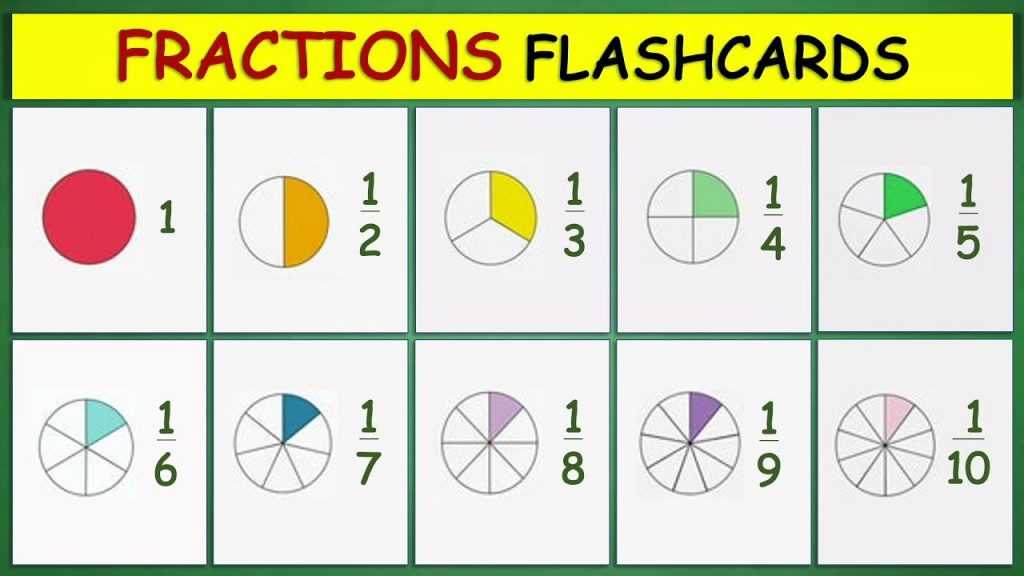
Using Fraction Flashcards is an effective method on how to teach fractions, where flashcards are used for quick and accurate fraction identification.
Materials Needed: Flashcards with fraction representations.
How to Do:
- Prepare flashcards with different fractions depicted visually.
- Show the flashcards to children and have them quickly identify the fraction.
- Mix and match flashcards to create new fraction challenges.
Learning Outcome: This activity improves speed and accuracy in recognizing fractions, aiding quick identification and understanding of different fractions.
10. Fraction Memory Game
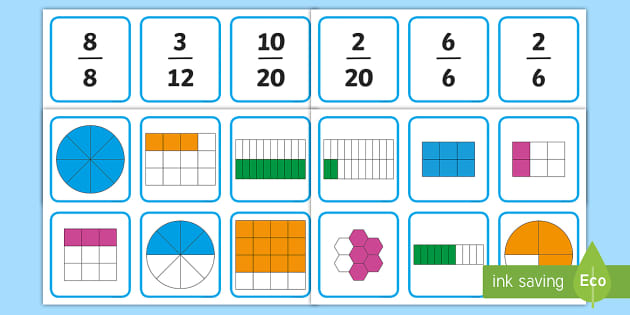
A memory card game where players match fraction representations with their numerical counterparts.
Materials Needed: Cards with fraction pictures and corresponding numerical fractions.
How to Do:
- Lay all fraction cards face down.
- Players take turns flipping two cards, trying to find matching pairs.
- The game continues until all pairs are matched.
Learning Outcome: Improves memory and aids in recognizing and matching different representations of fractions.
11. Fraction Puzzles
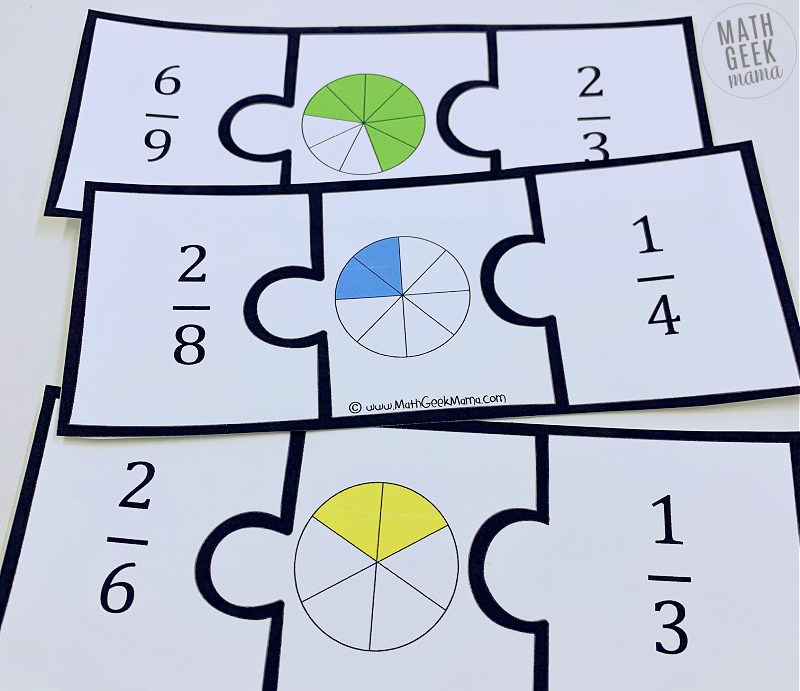
Fraction Puzzles are engaging activities where children solve puzzles that involve fraction problems, enhancing their problem-solving and critical thinking skills.
Materials Needed: Fraction puzzles or worksheets with fraction problems.
How to Do:
- Provide puzzles that require manipulation of fraction pieces to complete a picture or solve a problem.
- Encourage children to work individually or in groups to find solutions.
- Discuss the strategies used and the fraction concepts learned through the puzzles.
Learning Outcome: This activity develops problem-solving and critical thinking skills as children work through challenges involving fractions.
Related Reading: Best Math Puzzles for Kids to Improve Cognitive Abilities
Reinforce Fractions With Worksheets
Once your child grasps the basic concept of fractions, reinforcing and solidifying this understanding is crucial. This is where worksheets play a vital role. Worksheets are an excellent tool for practice and retention, helping to ensure that the initial comprehension of fractions is deeply embedded in your child’s learning journey.
To help your child continue their fraction learning journey, here are some fraction worksheets designed to reinforce and strengthen their understanding of fractions. These worksheets are tailored to various levels and cover a broad spectrum of fraction concepts, ensuring comprehensive practice and learning:
Conclusion
In conclusion, teaching fractions to children doesn’t have to be a daunting task. With the right activities and tools, it can be an enjoyable and rewarding experience. Remember, the key to successful learning is engagement and practice. Activities like Fraction Skits and Outdoor Fraction Scavenger Hunts make learning interactive and fun, while worksheets provide the necessary practice to reinforce and solidify the concepts.
We hope this blog has equipped you with valuable tools and ideas on how to teach fractions effectively. Happy fraction learning!
Related Reading: Best Math Teaching Apps for Teachers
Frequently Asked Questions (FAQs)
What age is appropriate to start teaching fractions?
Fractions can typically be introduced around the age of 7 or 2nd grade. Children usually grasp basic number concepts at this age, which provides a foundation for understanding fractions.
How can I tell if my child understands fractions well?
A good indicator is their ability to apply fractions in different scenarios, like solving problems in worksheets or explaining fractions in daily life situations, such as cutting a cake into equal parts.
Are digital tools effective for teaching fractions to children?
Yes, digital tools can be highly effective as they offer interactive and visual ways to understand fractions, making abstract concepts more concrete and understandable for children.
How can I make learning fractions fun for my child?
Incorporate fractions into games, cooking, and art projects. This approach makes learning fractions a part of enjoyable activities, increasing the child’s interest and engagement.


